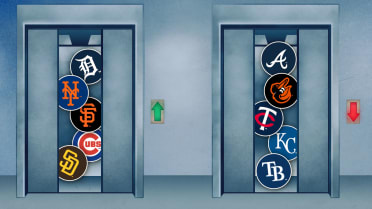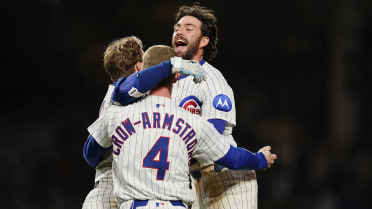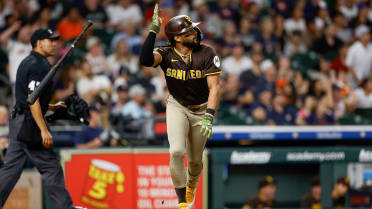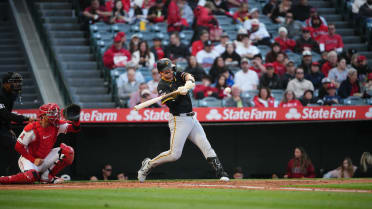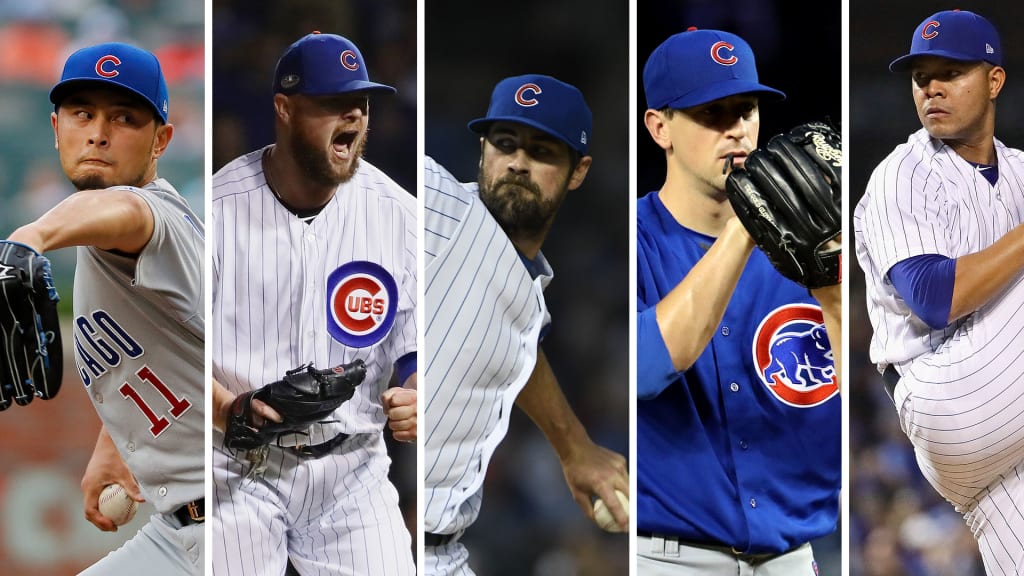
If Yu Darvish is healthy, ready to go for Opening Day and can simply be a reliable starter, is there a better five-man rotation than the Cubs going into the 2019 season?
--David S., Chicago
I wouldn't go as far as calling the Cubs' rotation the best five-man staff in baseball, but it's certainly within the top 10. Where exactly the rotation would fall in that type of ranking would probably depend on who you ask and what they value. For now, I think I'd put the Indians, Astros, Nationals, Dodgers and Mets ahead of Chicago's formidable veteran staff.
:: Submit a question to the Cubs Inbox ::
I will say, however, that having Darvish healthy and back to his old ways -- performing like a pitcher worthy of the six-year, $126 million contract he received from the Cubs last winter -- would give Chicago quite the staff of innings eaters. Across the board, the Cubs' starters (Darvish, Jonathan Lester, Cole Hamels, Kyle Hendricks and Jose Quintana) have 200-inning potential, which is rare in an era when 200-inning arms are waning.
The reason I wouldn't put the Cubs' rotation at the top of a ranking of baseball's best starting staffs is the fact that the group isn't as overpowering as some others. They are experienced, effective and deep, but it is also a staff with a couple aging arms and others built more around finesse than firepower. Granted, Hamels was not around all year and Darvish was sidelined, but the Cubs ranked 17th in strikeout rate (20.4 percent) and strikeout-minus-walk rate (11.1 percent) in 2018.
As noted, maybe it's not fair to just look at the '18 numbers, especially since this question is based upon Darvish being back, while considering that Hamels will be in the fold from the start. That would presumably bump lefty Mike Montgomery and the walk-riddled Tyler Chatwood to the bullpen. So, let's look at it in a slightly different manner.
Using Darvish's last full season (2017), combined with the 2018 totals (including Hamels' time with Texas) of the other four pitchers, you get a 22.3 strikeout percentage and 7.7 percent walk rate. That doesn't include any other starts by Cubs pitchers. Those figures would've ranked 14th and 13th, respectively, in MLB last year. The 14.6 strikeout-minus-walk percentage would've ranked 12th overall.
Fangraphs currently projects the Cubs' five starters to have 12.2 WAR combined. Using the '18 totals for Lester, Hamels, Hendricks and Quintana, plus Darvish's '17 showing, you get 12.0 WAR. For context, the Braves' rotation as a whole ranked 12th in MLB with 12.0 WAR last year. So, no, I wouldn't call the Cubs' staff the best in baseball going into 2019, but it is definitely a major area of strength for the roster.
First off, I wanted to say I've enjoyed listening in to your MLB.com Cubs podcasts with Dani Wexelman and reading your articles. I've noticed you use a lot of sabermetrics. Which advanced statistics should a regular baseball fan become familiar with?
--Matt M., Peoria, Ill.
Thanks for listening and reading, Matt. I appreciate the question, too, because I do feel it's important to learn some of the numbers beyond the traditional counting stats or things like batting average. I could spend the entire Inbox on this topic, but I'll skate over a handful here.
I love context and, if you're looking at hitters, it's tough to beat Weighted Runs Created Plus (also known as wRC+). It's an all-encompassing offensive metric that simplifies things by setting 100 as league average. Anything above or below 100 is the percentage above or below league average. For example, Javier Baez had a 131 wRC+ in 2018, meaning he was 31 percent above average as a hitter.
Another aspect that I like about wRC+ is that -- not only is it park adjusted -- it is something you can compare across eras. Hitting 30 home runs in 2019 is not the same as hitting 30 homers in 1919. But, a 110 wRC+ means the same no matter the year due to the stat being league-adjusted. There are other statistics similar to this one, too. Baseball-Reference has OPS+ and Baseball Prospectus now has DRC+. The front office people I have talked to say wRC+ is the best of the publicly-available numbers for hitters.
There are a lot of other numbers I like to lean on, especially via Statcast™ (you can do detailed searches on baseballsavant.com). You can learn a lot through the "expected" numbers there, and the fielding metrics are getting better by the year. For pitchers, I don't really have one metric I use. I think you can look at ERA, FIP, dERA and other numbers and kind of paint a larger picture. You'll rarely see me cite an individual's win-loss record in any analysis.
The Cubs have had a very inactive offseason. I understand that they are restricted as to how much they can do with their current payroll situation, but I read recently that (president of baseball operations) Theo Epstein said he would not let the payroll dictate the offseason. Do you think the Cubs will make a move, or will they keep the same team on the field for this upcoming season?
--Owen L., Deerfield, Ill.
In a recent interview on 670 The Score, Epstein emphasized that the Competitive Balance Tax (often referred to as the luxury tax) threshold was not dictating the team's approach to the offseason. The Cubs' luxury tax payroll already projects to be $20 million or so over the first penalty line of $206 million, so no, getting under that threshold is not the priority. Epstein did stress, however, that they are working with a budget.
"I've said that all offseason, from the first press conference on: This is not an offseason where anyone should be fixated about the tax," Epstein told 670 The Score. "It's like any business -- there are budgets. You can't ignore them. You can't spend what you don't have. You should spend everything you do have. There will be offseasons where you'll be very, very mindful of the CBT and not going just a touch over it, for example, and then hurting yourself with respect to future tax rates or Draft positions and those things. That matters. This is not one of those offseasons. So, I wouldn't waste a lot of time thinking about the tax as you try to assess what's going on."
Unless the Cubs make some trades to move a contract or two, it does not sound like a major financial addition is realistic. That said, there are still moves to be made, especially for the bullpen, and I don't think the roster is done being tweaked ahead of Spring Training.
All we've been reading and hearing about this offseason has been Joe Maddon being a lame duck manager in the last year of his contract. Shouldn't Epstein be under a microscope in the same way?
--Bruce W., Brookfield
As a fan, you can position the microscope in the best way you see fit. When a player, manager or front office leader is in the final year of a contract, though, it's only natural -- fair or not -- for that to become a focal point. I will say, in every interview Epstein has done this offseason, he's thrown himself into the accountability fire. Here's from before the Winter Meetings: "We're all accountable -- me, especially -- for what happened last year. That's the first step. And then it's, 'How do I get better?'"
Does Daniel Descalso's contract count as $2 million or $2.5 million against the payroll for tax purposes?
--Aaron S., Des Moines, Iowa
Descalso will earn $1.5 million in '19 and $2.5 million in '20, but the average annual value (which counts against the luxury tax payroll) is $2.5 million. That is due to the $5 million guarantee, which includes a $1 million buyout for the $3.5 million team option for '21. That AAV represents a 49.25 percent increase over his last two years ($1.675 million) with the D-backs.
Jordan Bastian covers the Cubs for MLB.com. He previously covered the Indians from 2011-18 and the Blue Jays from 2006-10. Read his blog, Major League Bastian, follow him on Twitter @MLBastian and Facebook.
